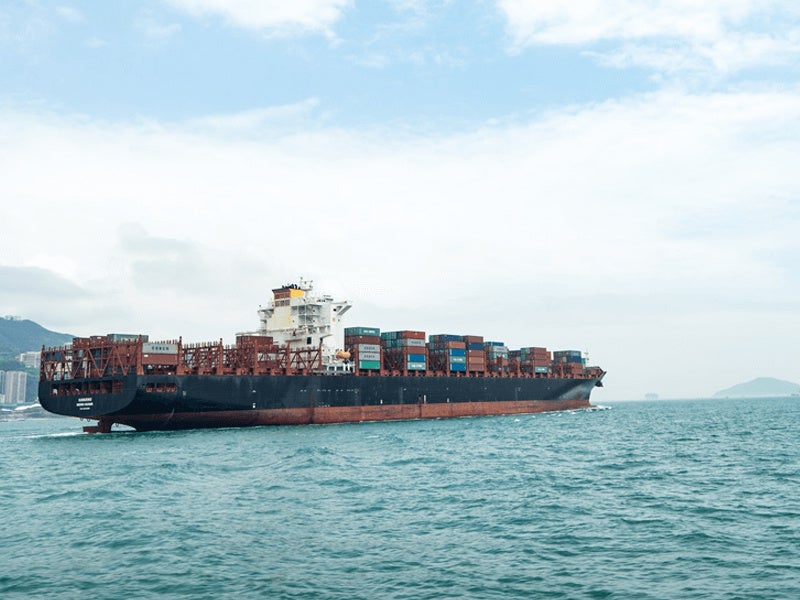
FRIENDSHIP SYSTEMS offers solutions that allow clients to reduce energy consumption and emissions by improving their ships, as well as turbomachinery and engine components.
Therefore, we have taken a look at the question of how much CO₂ emissions are saved from simulation-driven design with CAESES® every year.
Most transport is made at sea. Commodities and goods are shipped in the very sense of the word. To do so, there currently are a bit more than 50,000 merchant vessels in service. (In 2017, the fleet comprised around 17,000 ships for general cargo, around 11,000 bulk carriers, more than 7,000 crude oil tankers, over 5,000 container ships and almost 4,500 RoPAX ferry and passenger ships according to statistics).
Other larger ships such as search and rescue vessels, dredgers and salvage ships, offshore supply vessels, wind farm installation and support vessels, fishing vessels, tugs, pilot and workboats, naval ships and yachts also sum up to about 50,000 entities. Therefore, about 100,000 ships are in service today worldwide.
The CO₂ emissions from shipping amount to 3% to 4% of global CO₂ emissions, which sum up to a total of 32 billion tonnes of man-made CO₂ every year. Therefore, around 1 billion tonnes of CO₂ can be attributed to ships.
Many of the world’s biggest shipyards, most notably Hyundai, Samsung, DSME as the largest three yards, utilise CAESES® for the simulation-driven design of their ships. And so do many of the well-known model basins, consultants and ship design offices.
Many of our users report that they improve their hull forms with regard to resistance and propulsion by around 5%. Sometimes the savings are higher and sometimes they can be lower at 3% when setting out from a good starting point.
Since CAESES® was first released in 2007 and since FRIENDSHIP SYSTEMS started to promote the simulation-driven design of ship hull forms in the early 2000s, more than 40,000 ships have come into service, partially replacing older vessels. A tangible number of these ships have undergone optimisation for lower energy consumption directly by using CAESES® or indirectly by utilising simulation-driven design as researched and promoted by FRIENDSHIP SYSTEMS AG. We estimate that around 10,000 ships need about 4% less energy by now than they would have needed in the past, with an additional 1,000 ships every year. In 2019, this is approximately 10% of the fleet.
Naturally, ships are not always at sea and they are not continually benefiting fully from the energy savings achieved at the design stage. We, therefore, assumed an average of 220 days at sea per year and a utilisation rate of 75% of the possible savings when sailing.
Bringing all this together we estimate the CO₂ reductions to amount to 2.83 million tonnes in 2019. Keeping the many assumptions and rougher numbers in mind, we felt that we should introduce a very conservative safety factor of two into the analysis. Rounding off to a smooth number we then get an annual reduction of 1.4 million tonnes of CO₂, which is much more than one million.
How does this relate to emissions from other sources? A standard semi-detached family home in Germany would burn about 1.5 tonnes of oil for heating per year, emitting some 3.9 tonnes of CO₂. That means that the above savings equal the private emissions of around 350,000 houses, an equivalent to providing heated homes for the population of a large German city such as Munich.
Let us take a look at a representative ship for estimating CO₂ emissions in a bottom-up approach. A container ship with a capacity of 4,100 containers (TEU) would have an engine of 37,000kW and would typically be at sea for about 6,000 hours per year. Fuel consumption is approximately 0.166kg/kWh. Assuming a utilisation rate of 75% and an improvement of 4%, approximately 1,100 tonnes of fuel are saved annually. These savings correspond to just about 3,000 tonnes of CO₂ emissions annually for one single ship.
As a second example, let us analyse a slower steaming Aframax tanker with an engine of 13,500kW. With similar assumptions as for the container ship, the yearly savings then amount to about 400 tonnes of fuel and a bit more than 1,000 tonnes of CO₂. Consequently, the lower estimate of 1.4 million tonnes of CO₂ emissions derived from the top-down approach for 10,000 ships seems conservative.
Apart from the ecological impact, there naturally is an economical component, too. Increasing energy efficiency readily reduces operational costs in shipping. World bunker prices for IFO 380 are around €430 per tonne (February 2019). The annual costs are therefore reduced by €473,000 for the container ship and by €172,000 for the Aframax tanker. Since most ships are in operation for 20 years, this adds up to a large sum.
We believe it may not be so important which of the numbers, those derived from the top-down or the bottom-up approach, are more accurate or more reliable. The important message is that each tonne of CO₂ that is not emitted helps to reduce our environmental footprint. And we are more than happy to be part of the effort of making our world greener.

